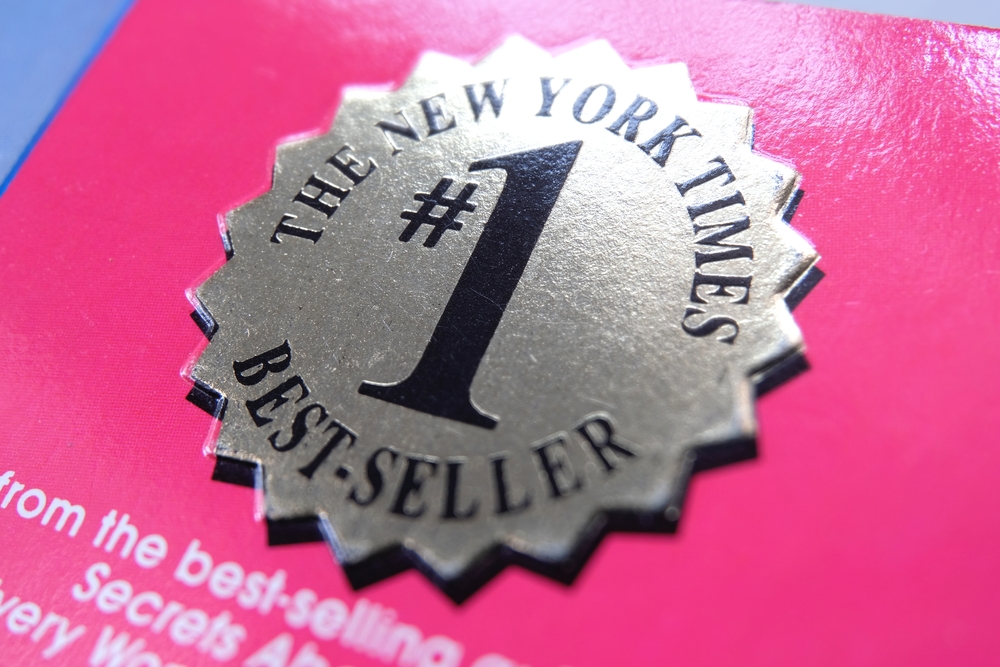For many authors, a primary career goal is to make it onto the New York Times bestseller list. There are a number of different such lists out there, but the NYT’s is easily the most prestigious and well-known, and it’s a goal many authors aspire to with good reason.
How One Gets on the New York Times Bestseller List
There are a few general requirements that you must meet to have a chance at getting on the NYT bestseller list, and the first involves the number of copies you sell in a week. The absolute minimum number here is 5,000 copies in a week, though there are many cases where your number will need to be closer to 10,000.
In addition, your book sales cannot all come from one single entity — they must be distributed more or less evenly across different retailers. This helps to ensure that your book is being read and purchased by a wide range of people, as opposed to just one specific group or demographic.
Sales data for the New York Times list is collected across thousands of bookstores, large and small, over the course of a single week. Once they have all their numbers in, they aggregate them, weighting certain stores more heavily for various reasons, and end up with an overall number that represents what they believe is real consumer interest.
General Rules for The Bestseller List
There are just two major rules that are typically stated for making it onto the NYT bestseller list:
- The book must be traditionally published (more on this in a moment)
- Minimum distributed sales must be over 5,000
There are other factors at play as well, including your category — fiction, nonfiction and monthly lists are the three standard templates here.
Can a Self-Published Book Become a New York Times Bestseller?
Suppose you were reading the above section regarding traditional publishing as a requirement for making the New York Times bestseller list. In that case, you may be wondering if it’s even possible for a self-published author to make the list. The answer is yes — but there’s no question it can be a bit tougher.
When we talk about “traditional” publishing, this refers to an author who has their book in various brick-and-mortar and online book stores. Most self-published authors have to distribute their work themselves, and thus have a far more limited pool of resources for getting the word out about their book.
That said, there are strategies you can employ if you’re interested in learning how to put your self-published book on the NYT’s bestseller list. These include:
- Getting featured on Amazon or GoodReads: The more people that see your book, the better. Get named as a “daily deal” on Amazon, or get selected as a “best of” for GoodReads — both have been known to help self-published authors crack the bestseller list.
- Paying for advertising: There is a strong contingent of people who believe you can simply pay your way onto the bestseller list. While this may be true to some extent, it’s important to note that the New York Times takes various measures to ensure that books on their list are there because of genuine reader interest, not because of paid advertising.
- Creating a marketing campaign: This is likely your best bet if you want to see real, sustained success with your self-published book. A well-thought-out and executed marketing campaign can get your book in front of the right people, and help to generate those all-important sales numbers.
- Working with a publicist: In many cases, those creating any kind of marketing campaign will work with a professional publicist. They can help you to get exposure and raise your profile — both of which are critical components in the push toward making it onto the bestseller list.
Success stories of self-published authors
Self-published authors have shown that bestseller status is within reach. E.L. James’ Fifty Shades of Grey, which sold over 150 million copies, began as an independently published novel. Andy Weir’s The Martian started as a self-published serial before it went viral, leading to a major publishing deal and a Hollywood film. Both authors built loyal followings by engaging with readers directly and using grassroots marketing.
Strategies for self-published authors
Building a strong author platform is essential to self-publishing success, and it starts with understanding where your personality fits within your genre and audience. For non-fiction writers, positioning yourself as an authority through blog posts, webinars, or podcasts can be crucial. Fiction writers may focus on building personal connections by sharing their creative process or offering sneak peeks of upcoming work.
Social media platforms like Instagram, Twitter, and Facebook are vital, with 71% of readers discovering new books through these channels. However, don’t underestimate the power of a well-crafted newsletter. It’s a great way to maintain a loyal audience, offering updates on your writing journey and upcoming releases, and keeping your readers informed and engaged.
Pre-orders are a powerful tool for boosting visibility. Books with solid pre-order numbers on Amazon are ranked higher, which can significantly impact launch day success. Don’t forget about the importance of a professionally designed cover—studies have shown that a great cover can increase sales by up to 35%, making it crucial for standing out in a crowded market.
Does Getting on the New York Times Bestseller List Mean You’re a Good Writer?
The answer here honestly depends on how you define the term “good writer.” Do you think good writing is simply about generating a lot of sales? Or do you believe that good writing speaks to a broader audience, and resonates with people on a deeper level?
There’s no right or wrong answer, but it’s important to keep in mind that the New York Times bestseller list is often seen as a barometer for success — and sometimes, this success can be misinterpreted as an indicator of a book’s quality. Just because a given book doesn’t make it onto the bestseller list, doesn’t mean it isn’t a good book. Conversely, just because a book is on the list doesn’t mean it’s automatically worth reading.
How to Write a New York Times Bestseller?
Writing a New York Times Bestseller requires a compelling story and market awareness. Focus on creating a narrative with relatable characters, emotional depth, and strong pacing to keep readers engaged. Research your genre and offer something fresh that stands out. For nonfiction, position yourself as a thought leader with unique insights or solutions.
Professional editing is crucial—polished writing makes all the difference. Combine it with a professionally designed cover to make a strong first impression. Timing is also key; align your release with trends or events that resonate with your book’s theme. By mastering these elements, you’ll set the stage for bestseller success.
Biggest challenges?
Breaking into the New York Times Bestseller list is highly competitive, with thousands of books released annually. Standing out requires more than good writing; it demands a robust strategy. Effective marketing, distribution, and timing are crucial, but a manuscript assessment and action plan can be game-changers. A manuscript assessment provides detailed insights into your book’s strengths, weaknesses, and market fit, while the action plan lays out a clear, step-by-step strategy for refining your work, targeting the right audience, and maximizing your launch. Together, they form a critical part of your strategic approach, helping you navigate obstacles and increase your chances of success.
At the end of the day, making it onto the New York Times bestseller list is an accomplishment that should be celebrated by any author. It’s not easy to get there, but if you follow the correct marketing and promotional strategies, you may find yourself listed on this highly competitive list.
For more on the NYT bestseller list and how you might be able to get there, or to learn about any of our self-publishing processes or services, speak to the staff at Izzard Ink today.




